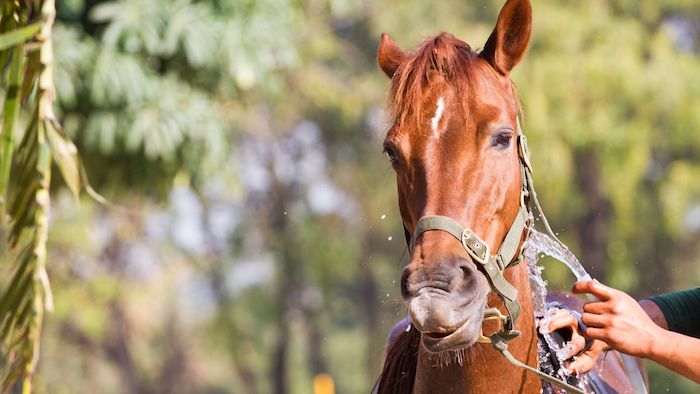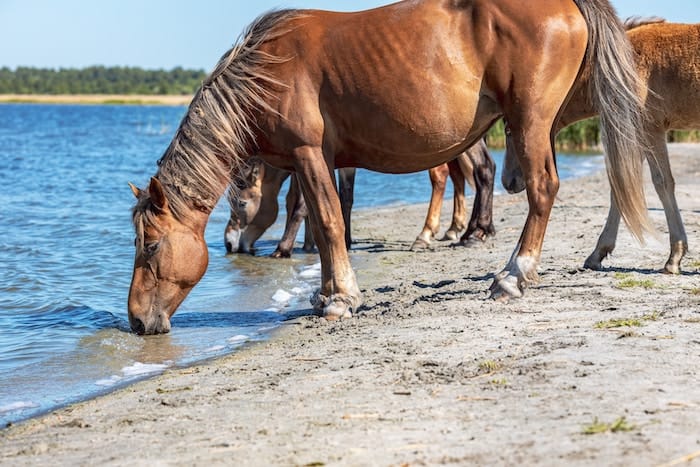The horse is one the world’s most magnificent animals, there is something about its noble profile and proportions that stirs something in our hearts whenever we see one, we humans are just naturally attracted to them, and have enjoyed a relationship going back over 5000 years! It comes as a surprise to some that the horse did not originate in the Old World but rather hails from the New World where the earliest known horses evolved 55 million years ago. The ancestors of the modern horse and all its relatives such as zebras, wild asses, and onagers deserted North America to migrate across the Bering land bridge into what is now Siberia. From there they spread west across Asia into Europe and south to the Middle East and Northern Africa where they evolved into the modern species we know today. Strangely, all the equine species that remained in the Americas disappeared completely, possibly succumbing to climate change, or were hunted into extinction by humans, and did not return until the Europeans brought them with them during the Age of Discovery, completing a round the world loop from across the Pacific, then back across the Atlantic.

European explorers were also responsible for bringing the horse to Australia, arriving in January 1788 with the first British colonists, who had purchased seven light riding breeds in Cape Town, South Africa on their way to Sydney. Horses remained scarce and highly valuable for decades, but by the 1830s Australia’s herd was growing steadily as new settlers imported mixed-breed horses from India and the Cape, whilst Thoroughbreds, Clydesdales, and Arabians were brought from England. The descendants of these animals are still with us today since horses have continued to charm Australians, and there are currently an estimated one million domestic horses on the continent. To ensure the continued supply, modern breeders rely on equine reproductive services to help preserve the historical breeds, some of which are even cloned using advanced scientific processes!

Horses played an important role in the history of the nation, explorers used horses to traverse and chart the vast wilderness of inland Australia, and from the 1850s hopeful miners in the thousands relied on horses to carry them out to the booming goldfields. They were followed by settlers, who together with their sheep and cattle, used horses to help them spread inland across the Australian continent where they eventually occupied large tracts of grazing land. Here pastoral stations were established, and the horses proved indispensable when moving flocks and herds across open country, mustering animals for shearing or slaughter, patrolling property boundaries, and recovering lost or stolen livestock. Draught horses and lighter workhorses became more available, and horsepower drove the success of Australian farms by working the land, increasing agricultural expansion, and helping to make farm life possible in such a hostile environment. By the late 19th century the whip-cracking, hard-riding stockman and his tough bush horses took their place as symbols of an emerging national identity.
As the colonial settlers migrated inland, rough trails were laid between towns, ports, and remote pastoral stations. In the earliest days, people walked or relied on bullocks to pull the heavy loads of supplies, but the roads improved and horses were used to ride, pull passenger coaches, and haul heavy goods in wagons. Horses were expensive to purchase and to keep, but they were fast, and they enabled trade to grow, people to travel more easily, and helped the long arm of the law to extend its reach across the vast continent.

It is from these rough, rural times that Australia’s famed Waler breed of horses developed, strong, reliable horses with loads of of stamina and great hardiness. Their reputation for being tough and dependable mounts in rough, wild terrain led the Waler to be eagerly bred in large numbers by the British military, and trade quickly developed with thousands of the doughty breed shipped overseas. The first Australian breed Walers were sent to war in India in 1857, where they earned their excellent reputation of being more reliable than other breeds, and for these reasons around 160,000 Walers served in World War 1.
The descendants of these durable Australian-made horses are still with us today, some living in the wild as feral horses called brumbies, some still at work on outback stations where despite modern technology they continue to play a role in livestock management. Australia is a nation where the partnership between humanity and these noble creatures continues into a new century.
